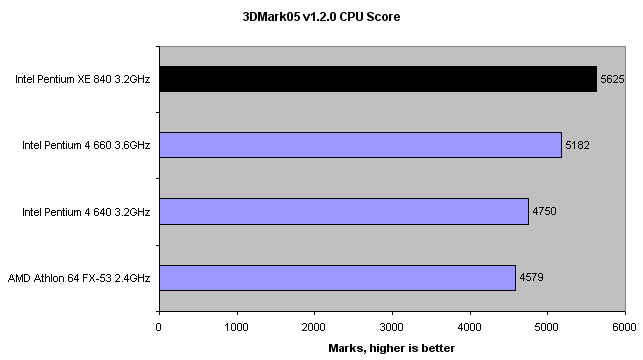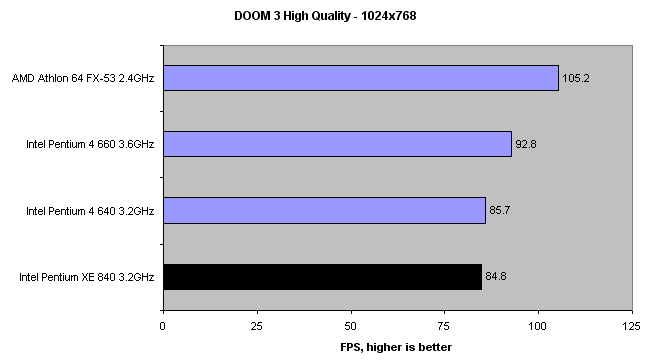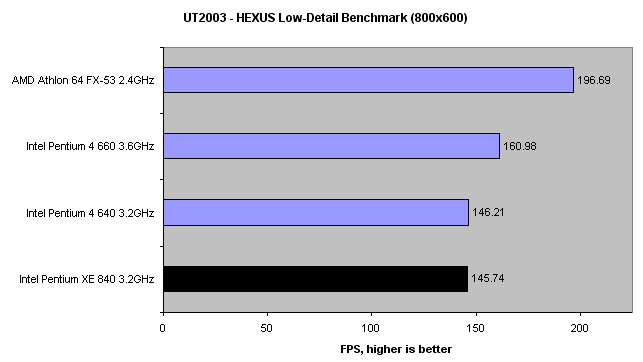Gaming

Futuremark's 3DMark05 CPU test has some multi-threaded content, and it's sensitive to on-chip cache levels. That's why the Smithfield XE 840 comes out on top.

Most present games, however, aren't multi-threaded in nature. DOOM 3 is an example of such. Athlon 64 CPUs will tend to do better than Intel's (including dual-core models) because game code just doesn't take advantage of parallel or multi-thread execution. That's why true dual-CPU systems have never shone brightly when evaluated this way.

Our UT2003 botmatch test reinforces the single-threaded nature of most games' code. The second execution unit is left untapped. The benefit of dual-core CPUs in this kind of environment won't generally be reflected by higher framerates. Rather, it's the ability to run another CPU-intensive program in the background without impacting on gaming performance. In other words, true multi-tasking.









